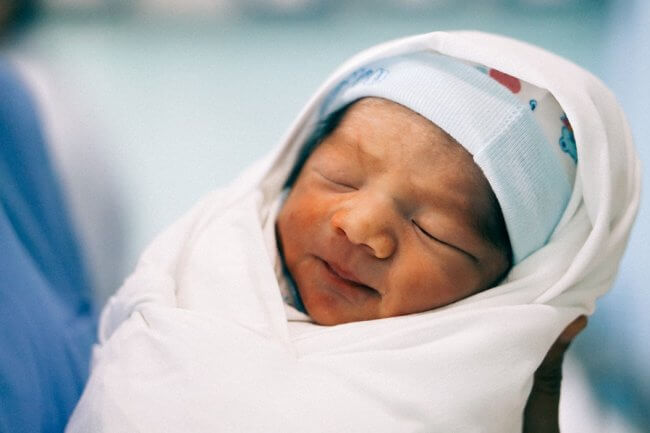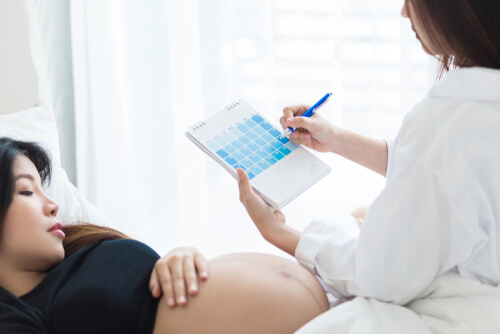
Across the country, the rate of women giving birth by caesarean section, or C-section, has risen to 33% of births, according to the Australian Institute of Health and Welfare’s (AIHW) 2018 report.
Out of the 309,000 births covered in the report, 101,370 were C-sections.1
In New South Wales, the latest numbers are slightly higher at 33.8%,2 while Western Australia is much higher at 37.8%, according to each state’s respective health departments.3
Interestingly, the numbers for C-sections are higher in private hospitals compared to public hospitals.4
In Australia, roughly 830 babies are born each day, according to the Australian Bureau of Statistics.5
While Australia isn’t alone in this rising trend, and C-section operations are increasingly common throughout the globe, the AIHW states Australia’s rate of C-section births is higher than many other Organisation for Economic Co-operation and Development (OECD) countries.6
So, why has there been such a big rise in C-sections in Australia? Reasons range from:
- the rising age of first-time mothers,7
- the increasing rate of obesity among women,8 or
- the mother has had a C-section before.9
In fact, the rate of vaginal birth after C-sections (VBAC) is declining in Australia.10

Vaginal births and caesarean sections: what you need to know
A caesarean section is an operation where a horizontal cut is made across the mother’s abdomen, often low on the belly but sometimes vertically if the baby must be delivered as quickly as possible in an emergency.11
Obstetricians will often plan a caesarean birth ahead of delivery due to a number of reasons. For example:
- the baby is positioned bottom or feet first (known as the breech position) or is lying sideways (the transverse position) and cannot be turned around
- the mother is carrying twins, and one of the twins is in a breech or transverse position
- the mother is carrying three or more babies
- Placenta Previa, where the placenta blocks the cervix (the womb’s opening), has occurred12
In some instances, a C-section may be deemed medically necessary and will have to be done, unplanned. This is also known as an emergency caesarean, which can occur due to events during vaginal birth or labour, such as:
- the baby’s head not moving or fitting through the pelvis,
- the baby’s health may be compromised,
- the umbilical cord has fallen through the cervix into the vagina (prolapse),
- labour contractions are not strong enough to push the baby out or are taking too long,
- high blood pressure and other health issues that make vaginal birth dangerous, or
- the mother has had a C-section previously.13

During a caesarean delivery, the mother will be put under anaesthetics such as an epidural, a spinal block, or a general anaesthetic.14
Vaginal birth can be less risky,15 but still has the risk of tearing at the vaginal opening during labour. Over 85% of women who deliver their babies through vaginal birth experience some degree of perineal tearing, though this risk decreases for future births and in most cases, the tearing will heal.16
Pregnancy and the thought of vaginal birth can be scary and intimidating, which can make the option of a caesarean delivery more appealing.17
Beyond the medical factors at play, the risk of tearing and the convenience of a C-section birth are factors in the rise of elective C-section births in Australia.
The benefits of caesarean sections in private hospital
Women with obstetrics cover under their private hospital insurance can choose to give birth in a private hospital. The benefits of choosing a private hospital to deliver a baby include:
- their choice in obstetricians and specialists, and
- stay in a private room instead of sharing a ward, should one be available.
Having the obstetrician of their choice can help pregnant women feel comfortable, as the obstetrician will become familiar with the details of the mother’s pregnancy journey and medical history.
Furthermore, recovery after C-section is longer than vaginal birth, and being able to recover in the comfort of a private room can be another benefit.

There is usually a 12-month waiting period for obstetrics under health insurance. This means women planning on having children will need to wait before they can be covered. In addition, patients may owe out of pocket expenses if their doctor or specialist charges above the MBS limit for certain procedures/treatments. Expecting mums should check with their delivery team prior to the big day, to ensure they’re fully aware of all the costs going in.
Even with obstetrics cover and private health, the baby may not be covered immediately under the mother’s policy once they’re born, and therefore will need to be added to a new family policy. This is different across health insurance funds.
If you are considering getting cover for pregnancy under private health insurance and want to know more, we have an informative guide that can take you through the details, benefits, waiting periods and extras of private health insurance obstetrics cover.
Sources:
[1] Australia’s health 2018. Australian Institute of Health and Welfare. 2018.
[2] NSW Mothers and Babies 2017. NSW Ministry of Health, New South Wales Government. 2018.
[3] Induction of Labour & Caesarean Section. Department of Health, Government of Western Australia. 2018.
[4] Australian Caesarean Stats of the Last Decade. About Birth, aboutbirth.com.au. 2017.
[5] Population clock. Australian Bureau of Statistics. 2018.
[6] National Core Maternity Indicators. Australian Institute of Health and Welfare. 2018.
[7] The Rise of Caesarean Births in Australia. Sarah Vogel, Ausmed.com. 2016.
[8] Obesity in pregnancy. Queensland Clinical Guidelines, Department of Health, Queensland Government. 2015.
[9] Western Australia’s Mothers and Babies, 2014. Department of Health, Government of Western Australia. 2018.
[10] Australia’s health 2018. Australian Institute of Health and Welfare. 2018.
[11] Caesarean. Pregnancy birth & baby, Health Direct, Department of Health, Australian Government. 2017.
[12] Caesarean section. Better Health Channel, Department of Health and Human Services, Sate Government of Victoria. 2017.
[13] Ibid.
[14] Caesarean. Pregnancy birth & baby, Health Direct, Department of Health, Australian Government. 2017.
[15] Birth: vaginal birth and caesarean birth. Raising Children Network, Department of Social Services, Australian Government. 2017.
[16] “Perineal tears – A review”. Ryan Goh, Daryl Goh & Hasthika Ellepola. Australian Journal of General Practice, volume 47, issue 1-2. 2018.
[17] “Fear of pregnancy and childbirth”. K Hofberg, M R Ward. Postgraduate Medical Journal, volume 79, issue 935. 2003.







